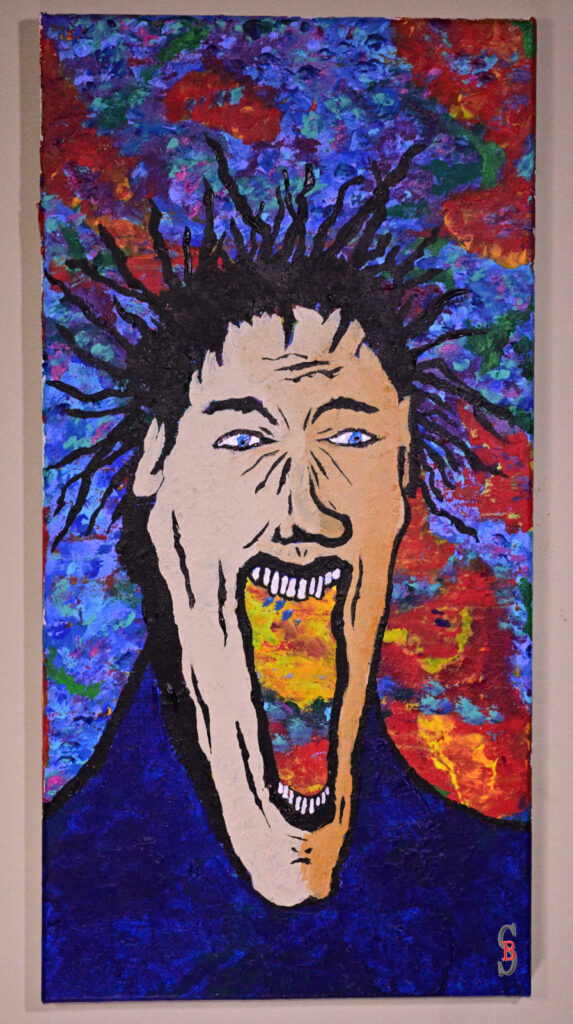Narcolepsy: The Missing Conversations in Science—A Call for Clarity Beyond Sleep
For years, narcolepsy has been defined almost exclusively as a sleep disorder, with treatments and research largely revolving around sleep/wake regulation. But the lived experience of those with narcolepsy suggests something far more complex—something that isn’t just about sleep but about neurological balance, physiological stability, and cognitive energy regulation.
While medical research has advanced, much of the conversation remains locked in a narrow framework, using terminology that fails to capture the overlapping, interconnected realities of the condition. This isn’t about dismissing the progress made—it’s about expanding the perspective so that patients’ experiences, which often defy textbook definitions, can be better understood and addressed.

The Brain Is Not a Muscle—But It Struggles to Synchronize
Narcolepsy doesn’t stem from muscle dysfunction, yet muscle atonia and neurological misalignment are deeply intertwined in the symptoms people experience. Orexin/Hypocretin, the neuropeptide central to Type 1 Narcolepsy, doesn’t just regulate wakefulness—it plays a role in autonomic function, emotional regulation, metabolism, and neural communication. Yet, common discussions rarely link these elements together, leaving patients with symptoms that seem disjointed rather than part of a broader neurological condition.

REM Dysfunction, Muscle Atonia & Consciousness—A Broken Rhythm
Narcolepsy’s hallmark symptom—dysregulated REM sleep—doesn’t just disrupt sleep patterns; it disrupts the body’s ability to reset, resync, and balance energy levels across wakefulness.
Instead of viewing cataplexy and REM intrusion as isolated events, they might be better understood as failures in neural synchronization—where the relationship between wakefulness, bodily control, and cognitive energy levels isn’t functioning as a seamless system. Some days, mental energy might remain intact while physical exhaustion dominates. Other days, cognitive function takes a hit while the body feels capable. Sometimes, both crash together.
This isn’t just “sleepiness.” It’s neurological dysregulation affecting the ability to self-balance day to day.

A Framework That Limits Progress—The Need to Expand Beyond Sleep
The classification of narcolepsy within hypersomnia disorders overlooks its deeper neurological roots—roots that may place it closer to systemic autoimmune conditions rather than simply a disorder of excessive sleepiness. The hesitation to go beyond sleep science has inadvertently created tunnel vision in terminology, treatment, and public understanding.
This isn’t about disregarding sleep’s role—but without expanding the language, symptoms remain scattered and disconnected, making it harder to recognize the true overlap between cognitive function, physiological energy levels, and neural misalignment. The reluctance to widen the framework doesn’t just limit research—it prevents real clarity from emerging for those actually living with the condition.

A Call for Clarity, Not Just Treatment
Moving forward, the conversation needs to shift toward: ✔ Recognizing narcolepsy as more than just a sleep disorder—acknowledging its neurological self-regulation failures rather than purely sleep/wake dysfunction. ✔ Expanding terminology to account for the overlap in symptoms, instead of allowing rigid definitions to prevent deeper exploration. ✔ Embracing lived experience alongside scientific discovery, ensuring that real-world patterns inform research rather than being dismissed as anecdotal. ✔ Exploring narcolepsy’s place among systemic conditions, rather than limiting it to sleep-centered discussions.
Narcolepsy research has come far, but it has so much further to go. A shift in perspective won’t just help develop better treatments—it will help people feel seen, understood, and accurately represented in the medical field. The next breakthrough may not be another medication—it might just be the clarity that’s been missing all along.
This is for educational purposes only, I am not a medical professional–please seek out a qualified expert for advice.
Created by: Solomon Briggs (Narcoplexic)
April 9th, 2025


Erin Foley Moudry April 11, 2025
Very well written and a message that needs to reach more in the medical community for sure.
sol.briggs April 12, 2025 — Post Author
Thank you for commenting! I fully agree, not just awareness but actual clarity is needed. Feel free to share this with your doctors or whomever out there.
Stephanie Shargel April 12, 2025
You just said exactly what my experience has taught me. I clearly have cataplexy symptoms, but because I dont fit the narrow definitions, I dont get to have an official diagnosis. My personal experience is that this is far beyond a sleep issue. Neural communication and autoimmune are big players in my symptoms. Thank you for putting to words what represents so many of us.
sol.briggs April 15, 2025 — Post Author
Thank you for commenting!
The diagnosis path can be so difficult, and boy is it murky.
I hope that you can find some expertise out there, and ways to improve the situation.
The disease really is more than a sleep issue, far far more.
My efforts are a labor of love, as I am passionate towards the subject; while I am fascinated by it, as well, especially Cataplexy.
Julie Miller April 12, 2025
This is the most clear look into the neurological challenges faced with Narcolepsy. After years of trying to get neurologists to address or rather understand the neurological challenges of this disease as well as the EDS has been challenging. The overall attitude really is if we treat with drugs to sleep well everything is perfect in the day. No that stamp is not nearly the whole picture. Brilliant work.
sol.briggs April 15, 2025 — Post Author
Thanks for commenting, and the kind words!
I appreciate the feedback.
Totally agree with you.
I’d go as far as saying that even the top experts in the field, don’t fully grasp the entirety of the lived human experience.
They’ve come a long way, and the science is profoundly helpful, but it is about ‘the why and how,’ while not so focused on ‘the what.’
You may have seen the ‘Narcolepsy Symptom Severity Range Tool’ (NSSRT) that I created.
The visuals of it alone (which I just added an updated image to it) shed light towards the profound overlap and interplay of the core symptoms; which make this disease so difficult on really, all fronts.
And the NSSRT is not even touching on the various symptoms that go far beyond the core dysfunctional REM symptoms of the disease.